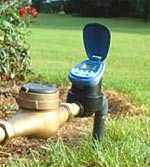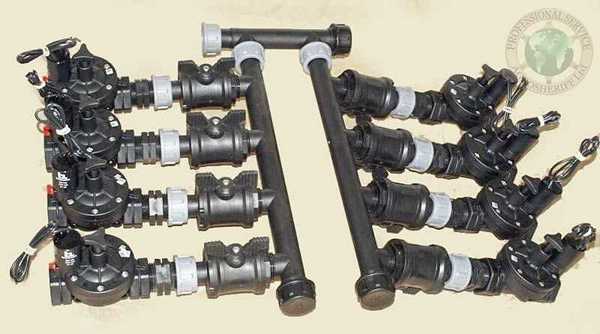Automating watering
Drip irrigation or sprinkler allow strictly normalized supply water to plants. From one dropper, one hour of its operation, the ground will get, for example, 2 liters of water. We know that excessive moisture, as well as the lack of it, necessarily affect the state of the plant, which will impact negatively!
Suppose we watered the flower bed with tomatoes. Given the size of the bush, climatic conditions and other factors, we can calculate the water consumption for each plant. Parent plant water consumption data can be found in the literature. Suppose we have found that a single tomato plant requires 4 liters of water per day. Based on this, the water in the system must be submitted 2 hours each day. Please note that this is a conditional count!
How to manage the duration of watering? How to do so that would turn on and off the water in a timely manner? There are two solutions to this problem:
The easiest option - to use an alarm clock, not to forget the time to turn on and then turn off the water at the time. And most importantly - do not forget to have a Alarm Clock!
Difficult option - buy automatics! Of course this requires a certain cost, but the benefits are obvious:
- Ability accurate dosage amount of water entering the watering.
- The possibility of fractional irrigation, that is, if we know that the total time of irrigation should be 2 hours per day, we can irrigate, eg, every 3 hours and 15 minutes! And your plants get exactly you define the amount of water a day, but not immediately, but gradually!
- The system works without your participation, no weekends, holidays, vacations, and other interruptions.
- For more sophisticated systems it is possible to connect the rain sensor, which will block the flow of water, if there is rain or soil moisture sensor that would maintain this humidity at the desired level.
- The possibility of including irrigation convenient for you time, or if there are problems with water supply, for example, at night, when there is water in the water.
Single-channel and multi-channel controllers:
Controller - this is easily programmable mini-computer that allows you to define a program of watering your plants and irrigation control in accordance with your wishes in an automatic mode.
Controllers are single and multi-channel.
What are their differences and advantages?
single-channel:
- Allow to automate one irrigated watering zone.
- Have a low cost.
Multi-channel:
- If your site some irrigated areas, it is necessary to use several single-channel or a multi-channel controller.
- Multichannel controllers allow different types of programming from 4 to 12 independently operating irrigation programs individually for each irrigation area.
- If you have 4 or more irrigation zones, the relative cost of the automation of each irrigation zone is lower than when using multiple single-channel controllers.
Installation of automation.
Single-channel controller:


There are various designs of single channel controllers, which are usually installed directly in the pipeline supplying water to the irrigation system. But we have many years prefer to work with the controllers of the company GEVA-75 Baccara. These controllers have a high reliability, are very economical and are inexpensive.
Multi-channel controllers.


Multi-channel controllers are installed separately and connected to the solenoid valves wires. Multichannel controllers can control irrigation from 2 to 24 irrigation zones.
solenoid valves
Solenoid valves are needed for what would be the controller of the team, for a given program they opened shut off the water supply to polivyemye areas (irrigated area).
The solenoid valves can be installed near the controller and remotely.
Power multichannel controllers can be performed either from the mains or from the battery.
Installation of solenoid valves.
If the solenoid valves are mounted remotely from the controller, the special problems with their installation there. They are connected to the pipe on the thread. The diameter of the cranes produced for small areas - 3/4 and 1.0 inch.
For multi-channel systems, cranes can be mounted next to the controller. It looks like this, as in the photo below:

This is an example of a controller assembly installation operating zone 4 (maximum 8) and an additional filter tap water completely shut off access to the system.
The more complex the assembly will look like this:

to water requirements.
Minimum water pressure required to operate the solenoid valves - 0.2 atm inlet valve. Those. the height of the water column should be at least 2 meters.
This is due to the valve construction. For it is necessary to secure closure at least a small inlet water pressure. 2.5 - 3 meters - a full guarantee open and close on command crane controller.
They are often faced with a problem - on the site there is no central water supply system, and watering is carried out from a barrel or other container. If you water this way, the barrel must be raised at least to a height of 2-2.5 m, and the filter and the valve are located on the ground level.
Power supply of valves:
Series Controllers GEVA 75 with integrated valves are equipped with coils with a voltage supply 9 volts. To power the controller and the valve 1 is used built in battery type "Crown". The design of the valve is made in such a way that opening and closing occurs when applying a small voltage pulse to the solenoid.
This achieves a very large saving battery power.
One battery lasts for a year of the controller and valves.
Examples. How does the controller near: